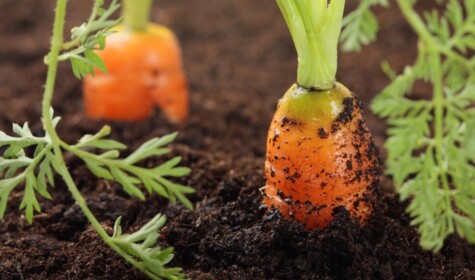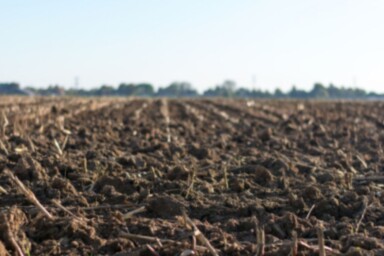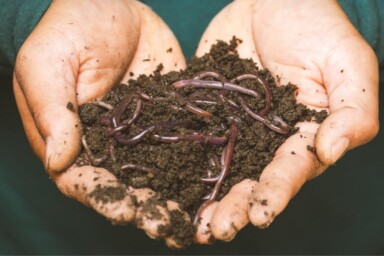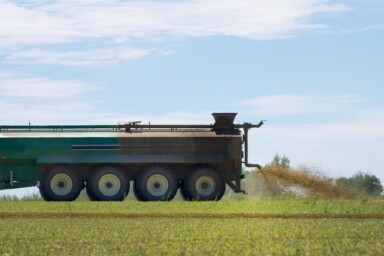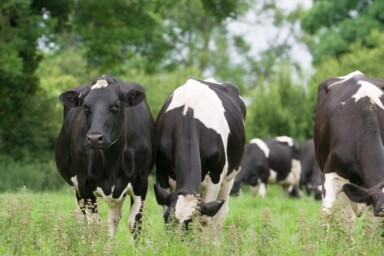The film, Kiss the Ground, offers an optimistic and – quite literally – down to earth message about how we might yet, to use the phrase, ‘save the planet’. SFT policy director Richard Young has been re-energised by the positive examples it presents and the hard work going on by farmers determined to increase the resilience of their land and spread the message that a regenerative approach to farming both pays better and makes you feel better.
‘Kiss the Ground’, currently streaming on Netflix, has huge relevance for the massive environmental and health problems we face today. Although mostly looking at American agriculture, it includes inspiring examples from Africa, China and Haiti. However, it also has universal relevance, as the damaging intensive agricultural practices developed in the US are used around the globe, and, consequently, regenerative solutions are widely applicable.
Most importantly, Kiss the Ground adds scientific finesse with celebrity endorsement to the black and white consideration of livestock in most anti-meat films and other communications that have so influenced young people in recent years. It does this by distinguishing between the livestock systems that are an essential part of the solution to creating a healthy planet, a healthy population and a stable climate, and those industrialised livestock systems that are very much part of the problem. As such it does not so much challenge the belief that we need to reduce meat consumption, as build on it.
Sexy soil life
Starting with some of the dire warnings about climate change, the film moves on to take a detailed look at what distinguishes a healthy soil, teaming with microbial life and sequestering CO2 from the atmosphere, from lifeless and degrading soil, releasing greenhouse gases to the atmosphere and on its way to desertification. It also links the health of the soil with the health and vitality gained from the foods grown in it. All this, familiar to organic farmers, is explained with great clarity in a way that must surely have wide educational potential. Animations, time lapse photography and films of soil microbes doing their thing to the seductive beat of Hot Chocolate’s 1975 hit, ‘You Sexy Thing’ all make it very watchable!
We learn about the symbiosis between plants and soil microbes and how organic material in the soil is effectively digested, so plants can take up the nutrients. In a similar way, we are shown that the complex carbohydrates we consume, such as leafy green vegetables, are broken down by our gut microbes into a form we can absorb. But just as pesticides destroy microbes in the soil, so pesticide residues in food can kill some of the microbes in our bodies, with a wide range of potentially negative health implications.
Soils and the climate
The following sequences explain the problem with large scale crop production, including how having too much bare land exposed at one time overheats local environments and disrupts the water cycle, accentuating global warming and speeding up soil degradation. As soils degrade, they require greater use of agrochemicals, including the relentless use of pesticides to maintain productivity. This vicious cycle is what is happening on most US farmland right now, and also worldwide, as agriculture continues to intensify, and more and more forest and virgin land is converted to food and livestock feed production. Globally, 40 million people a year are displaced when their progressively degrading soils get to a point where they are no longer capable of producing any food. Once this happens, the result is migration, conflict, refugees and rising extremism.
Soil conservation
The planet has now lost a third of its topsoil, but the high attendance from farmers taking part in workshops run by the USDA’s Natural Resources Conservation Service (NRCS), offers some hope that attitudes are starting to change. The NRCS is the successor to the Soil Conservation Service established by President Franklin D. Roosevelt in 1935 to help restore the degraded soils on 200 million acres of US farmland caused by the dust bowl conditions in the 1930s. We get a clip of Roosevelt neatly summing it up as, ‘A plan of cooperation with nature, instead of going along with what we’ve been doing in the past, trying to buck nature.’ One rather obvious question, not directly addressed by the film is if the US Government understood that in 1935, how come soils have been farmed so unsustainably since then?
Restoring degraded land
The work of Allan Savory, from the Savory Institute, using controlled livestock grazing to turn dry desert in Africa into a green and pleasant land, and John D. Liu from the Common Land Foundation who restored 35,000 square miles of the Loess Plateau in China that in 1994 looked like a moonscape, without any plant life or fertile soil, are truly uplifting. Their work shows that we should be never give up, however hopeless things may at times appear. It’s explained how once you turn a corner, once you begin to get plants growing and get bare soil covered, you start to cool the soil and the local atmosphere, reduce evaporation and begin to restore rainfall patterns, all of which can accelerate the processes of regeneration.
After highlighting the grotesque nature of intensive livestock farming and confined animal feeding operations (CAFOS) as they are called in the US, and the problems they create, the film makes a passionate, informed and eloquent case for regenerative farming methods, which generally have grass and grazing livestock at their core.
A succession of speakers argue that while we do, of course, have to switch to renewable energy, that won’t do anything to reduce the ongoing warming from the approximately 1,000 billion tonnes of carbon that humans have already put into the atmosphere, and that we need to farm in a different way in order to draw down as much of this carbon as we can and put it back in the soil, where much of it originated.
Some may see some of the film’s claims as too optimistic. It sounds as if the Savory Institute’s assertions about how much atmospheric carbon could be sequestered worldwide have informed the scriptwriters, but these have been criticised for being too optimistic by the Food Climate Research network and others. The French Government’s 4 per thousand initiative, which also features in the film is backed by the acclaimed French research establishment INRA. Despite this, while scientists from Rothamsted Research, the equivalent organisation in the UK, accept that soil carbon levels can be increased by 0.4% per year and even more than that, they argue that globally there are many situations where this will not be possible. That is almost certainly true, especially in some of the driest regions where decades of drought and poverty have left whole communities with few resources. Yet this should surely not stop us trying to remove as much atmospheric carbon as possible in this way, even if that means focusing first on the situations where the greatest progress will be made.
The film was directed by Josh and Rebecca Tickell, narrated by actor and environmentalist, Woody Harrelson, and has a formidable list of producers and executive producers, including, I happened to notice, Julian Lennon.
This is a lovingly created plea of great substance, by dedicated and caring individuals, showing why and how food systems globally must change. I urge you to watch it, if you haven’t done so already. We ignore it at our peril.
